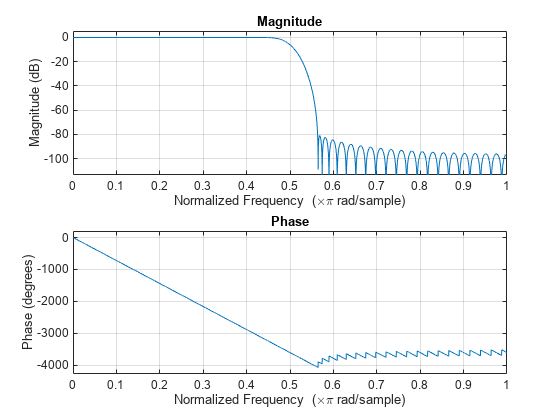freqz
Frequency response of discrete-time filter System object
Syntax
Description
[ returns the complex frequency response
h,w]
= freqz(sysobj)h of the filter System object™, sysobj. The vector w contains
the frequencies (in radians/sample) at which the function evaluates the frequency
response. The frequency response is evaluated at 8192 points equally spaced around
the upper half of the unit circle.
[ returns the
complex frequency response of the filter System object and the corresponding frequencies at h,w]
= freqz(sysobj,n)n points
equally spaced around the upper half of the unit circle.
freqz uses the transfer function associated with the filter
to calculate the frequency response of the filter with the current coefficient
values.
Examples
Input Arguments
Output Arguments
Tips
There are several ways of analyzing the frequency response of filters.
freqz accounts for quantization effects in the filter
coefficients, but does not account for quantization effects in filtering arithmetic. To
account for the quantization effects in filtering arithmetic, refer to function
noisepsd.
Algorithms
freqz calculates the frequency response for a filter from the
filter transfer function Hq(z). The complex-valued
frequency response is calculated by evaluating
Hq(ejω)
at discrete values of w specified by the syntax you use. The integer
input argument n determines the number of equally-spaced points
around the upper half of the unit circle at which freqz evaluates
the frequency response. The frequency ranges from 0 to π radians per sample when you do
not supply a sampling frequency as an input argument. When you supply the scalar
sampling frequency fs as an input argument to
freqz, the frequency ranges from 0 to fs/2
Hz.
